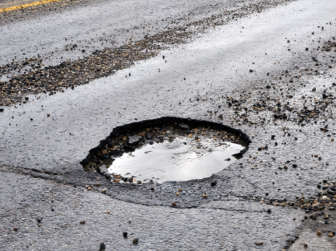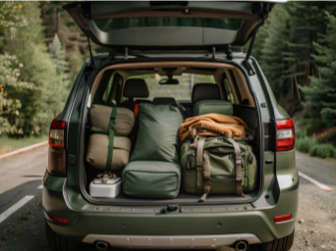Top Car Safety Features to Look for Before You Buy
The South African car market continues to grow across the board – with smarter, safer, and more connected vehicles arriving across all price ranges. From driver assistance to in-car connectivity, many of these features are no longer limited to luxury models. Budget-conscious buyers can now enjoy and look forward to next-gen motoring.
Car Safety Features List
Most manufacturers are now making some level of advanced safety features standard across all models. From automatic emergency braking to lane-keeping assist and blind spot monitoring, these systems are designed to help prevent accidents before they happen. For example, brands like Toyota (with its Safety Sense suite), Kia (through its DriveWise technology), and Hyundai (via SmartSense) are leading the way in making these life-saving innovations accessible to everyday South African drivers.
Understanding the Role of Active and Passive Safety Features in Modern Cars
For today’s motorists, staying safe on the road involves more than just cautious driving. It starts with understanding the two main types of safety systems built into modern vehicles: active and passive safety features.
Richard Green, National Director of the South African Motor Body Repairers’ Association (SAMBRA), explains the distinction. “Passive safety refers to systems designed to reduce injury after a crash has occurred,” he says. “These include features like seatbelts, airbags, and crumple zones that absorb the force of an impact.”
Active safety systems, on the other hand, work to prevent accidents from happening in the first place. “These technologies are incredibly smart — using cameras, sensors, and algorithms to monitor the vehicle and its surroundings in real time,” Green notes. “They act almost like a second set of eyes, tracking nearby vehicles, cyclists, and pedestrians, while constantly assessing road conditions.”
By analysing vehicle behaviour — such as speed, braking, and tyre traction in wet conditions — active systems can intervene if something seems off. They manage functions like steering, braking, and propulsion to help avoid or minimise collisions.
One of the biggest advancements in vehicle safety is the development of Advanced Driver Assistance Systems (ADAS). These include features that alert the driver or temporarily take control of the vehicle to enhance safety. When engaged, ADAS might trigger dashboard icons, audible alerts, or even subtle steering adjustments.
There are two primary types of ADAS technology:
- Vision systems, which rely on onboard cameras and software to detect hazards.
- Radar systems, which measure the speed, distance, and location of surrounding vehicles or obstacles.
Here are seven active safety features now commonly found in newer vehicles:
- Automatic Emergency Braking (AEB): This system warns the driver of an imminent collision and, if there’s no reaction, automatically applies the brakes to reduce the impact or avoid it entirely.
- Forward Collision Warning (FCW): Similar to AEB, this alerts the driver to an impending crash but doesn’t apply the brakes.
- Adaptive Cruise Control (ACC): This technology maintains a set speed but adjusts based on surrounding traffic. If your car is set at 100km/h and traffic slows to 80km/h, ACC will slow your car accordingly — and speed up again when traffic allows.
- Lane Departure Warning (LDW): This alerts drivers if the car unintentionally drifts out of its lane — potentially avoiding head-on collisions or accidents caused by veering into other lanes.
- Lane Keeping Assist (LKA): Going beyond LDW, this feature can actively steer the car back into its lane for a short period (typically up to 40 seconds) if no driver intervention occurs.
- Blind Spot Monitoring: Sensors monitor the areas over a driver’s shoulder that are typically difficult to see, warning of any hidden vehicles with a light or audible alert.
- Rear Cross Traffic Alert (RCTA): Especially useful when reversing out of tight spots, this feature detects crossing traffic behind the vehicle and warns the driver.
While these technologies dramatically improve vehicle safety, Green emphasises that they are not a substitute for responsible driving. “Even with the most advanced systems in place, accidents can still happen. Safety features — both active and passive — work best together, but the biggest factor remains the driver.”
He concludes with a reminder that most road accidents still come down to human behaviour. “Speeding, distracted driving, and fatigue are the top causes of accidents. Staying alert, obeying speed limits, and keeping your full attention on the road are still the most important safety measures you can take.”
Safety Features Every Car Buyer Should Consider
When shopping for a vehicle, especially on a tighter budget, safety features should be a top priority — not an afterthought. While many basics are standard today, it’s essential to confirm their presence, as their absence can have serious consequences.
Essential features include shatterproof glass to minimise injury from broken windows, seatbelts (specifically the now-standard three-point type with emergency locking mechanisms), and head restraints to prevent whiplash. Additionally, a car’s brake lights, indicators, and headlights are critical for visibility and communication on the road. Even bumpers, though simple in design, play a vital role in protecting the engine and absorbing minor impacts.
The Automobile Association (AA) urges consumers — especially first-time drivers or less experienced drivers — to consider safety first when buying an entry-level car.
Final Thoughts: A Bright, Motoring Future
Understanding the difference between active and passive safety features helps you appreciate how modern cars are designed to protect you — not just in a crash, but by preventing one in the first place. From intelligent systems like automatic emergency braking and lane-keeping assist to foundational basics like airbags, ABS, and seatbelts, every feature plays a role in your overall safety.
If you’re shopping on a budget, safety doesn’t have to be compromised. Focus on vehicles that offer proven essentials like ABS, ESC, and airbags, and take time to research crash test ratings before making a decision. Remember, the safest car is one that works with you — but still relies on your driving behaviour. Staying alert, focused, and responsible behind the wheel remains the most important safety feature of all.
Why do Car Batteries Struggle in Winter?
Reasons to Have an Extended Vehicle Warranty in South Africa


